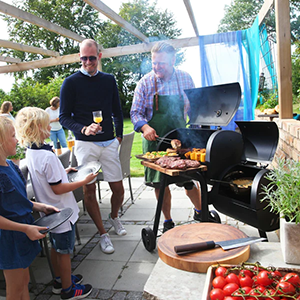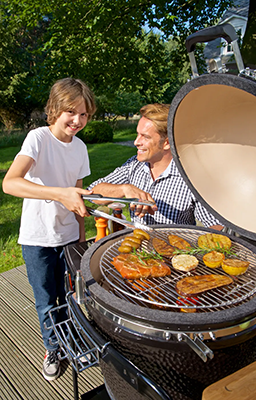What is that American meat called in Dutch? (2/2)

Short Ribs
American Short Ribs are cut from the lower flank section there called Short Plate . With us, we call this clapboard with bone or clapboard rib. This, too, is work meat and thus must cook for a long time. The result is the beef counterpart to the pork spare ribs much better known to us. For best results, the meat should be well fatty and marbled with fat.

Picanha
Originally this comes from Brazilian barbecue cuisine and there they use another way of butchering. The Picanha is the top part of what we call the tailpiece. Tailpiece is the triangular part at the end of the flat buttock. A beef has two tail pieces, these are on either side of the tail.

Brisket
The dish brisket is made from the eponymous part of the beef that includes the inner and outer pectoral muscles. Because cattle do not have a clavicle, 60% of the body weight rests on these muscles when the animal stands or walks. This requires a lot of connective tissue. Except for the top fat, it is not marbled at all, which requires the meat to be cooked at a low temperature for a very long time to get it tender.
The brisket consists of two muscles, The Flat and The Point, which are sold both together, , , and separately. Because of the Dutch slaughter method, there is no 100% comparable alternative, although klapstuk and puntborst come very close. The (American) original is usually available only from specialized web shops and quickly weighs 6 to 8 pounds or more. The brisket is considered one of the most difficult cuts of meat to prepare properly. If it succeeds, the brisket is super tasty. If not, it is dry or tough, or worse, dry AND tough.
Burnt Ends
After cooking the complete brisket, the burnt fat is removed from the Point. The remaining meat is sliced, sauced and returned to the smoker barbecue for another hour. These “burnt bits” are considered a delicacy, but preparation takes hours. You can make a similar snack much easier and faster also from pork belly (see an example in our recipes).
Burnt Ends was a creation of Arthur Bryant, owner of a BBQ restaurant in Kansas City. Bryant initially handed out his Burnt Ends as free tastings for waiting customers, but soon there was great demand for larger portions. National fame gained for the dish in 1974 when a famous culinary critic published an article in Playboy Magazine. Former presidents Henry Truman, Jimmy Carter, Bill Clinton and Barack Obama, as well as numerous other famous Americans (including Steven Spielberg and actors Jack Nickelson and Harrison Ford), have come to the birthplace of burnt ends to sample the original.

Pulled Pork
Pulled Pork uses meat that in America is called the Boston Butt, the upper part of the shoulder. Dutch procuring is an excellent alternative. The cooking method is low & slow with smoke. The buttery meat is pulled apart after cooking and, with sauce and coleslaw, served on bread.

Spare Ribs and Baby Back Ribs
Spare ribs are also widely known and easily available in the Netherlands (although the American variety is considerably larger). They are the cheapest parts of pork ribs, coming from under the stomach, brisket and behind the shoulders. They usually contain 11 to 13 bones. The meat is on and between the bones. Less common among us are crabs, although it should take little effort to find them. In America, Baby Back Ribs are made from this.

Pork Belly
Pork Belly is what we call belly bacon. You rarely, if ever, see it under this name in the butcher’s display cases, let alone on the supermarket shelves, yet it is plentiful: sliced, in the form of marbled bacon slices. If you’re going to make a recipe with pork belly on the barbecue, just ask your butcher for it (in one piece rather than slices).

White & Dark Chicken Meat
If you order a chicken dish in an American restaurant, you will often be asked if you like white or dark meat. The white meat comes from those parts of the chicken that consume energy only occasionally, such as the breast (breast) and wings (wings). The muscles that perform regular labor, the legs (drumsticks) and thighs (thighs), provide dark meat. In addition to a difference in color, there is also a difference in taste. The darker pieces contain slightly more fat, giving them a slightly more pronounced flavor and significantly less dryness. Without skin (skinless) , both white and dark chicken are quite lean.







